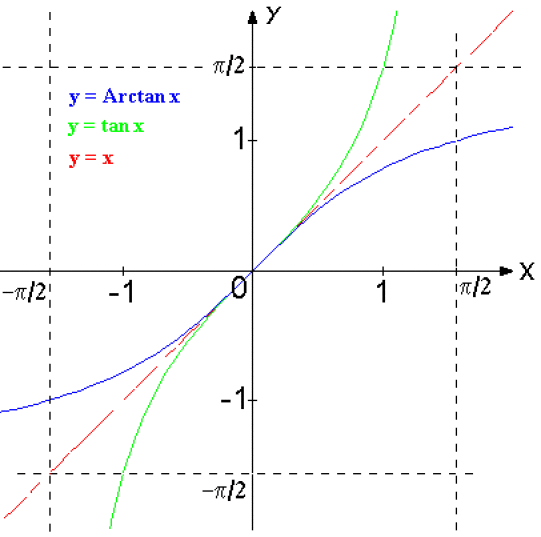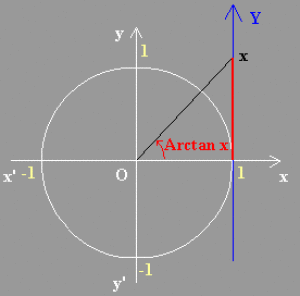Fonction Arctangente de x : Arctan x
Définition :
L'application \(\tan\) : \(]-\pi/2 ,~ \pi/2[ \to \mathbb{R}\) continue et strictement croissante admet une application réciproque notée \(\tan^{-1}\) ou \(\textrm{Arctan}\) : \(\mathbb{R} \to ]-\pi/2 , \pi/2[\)
\(\begin{array}{llll} \sin (\textrm{Arctan }x) = \frac{x}{\sqrt{1+x^{2}}} & \forall x \in\mathbb{R} \\ \cos (\textrm{Arctan }x) = \frac{1}{\sqrt{1+x^{2}}} & \forall x \in\mathbb{R}\\\tan (\textrm{Arctan }x) = x & \forall x \in\mathbb{R}\\\textrm{cotan }(\textrm{Arctan }x) = \frac{1}{x} & \forall x \in\mathbb{R}^{\ast}\end{array}\)
fonction impaire, d'où une étude sur \(D_{e} = [0,+\infty[\).
fonction dérivable sur \([0,+\infty[\) et :
\(\textrm{Arctan }' x = \frac{1}{\tan'(\textrm{Arctan }x)} = \frac{1}{1+\tan^{2}(\textrm{Arctan }x)} = \frac{1}{1+x^{2}}>0\)
donc fonction croissante sur \([0,+\infty[\).
tableau de variation :

Représentation graphique de Arctan x

